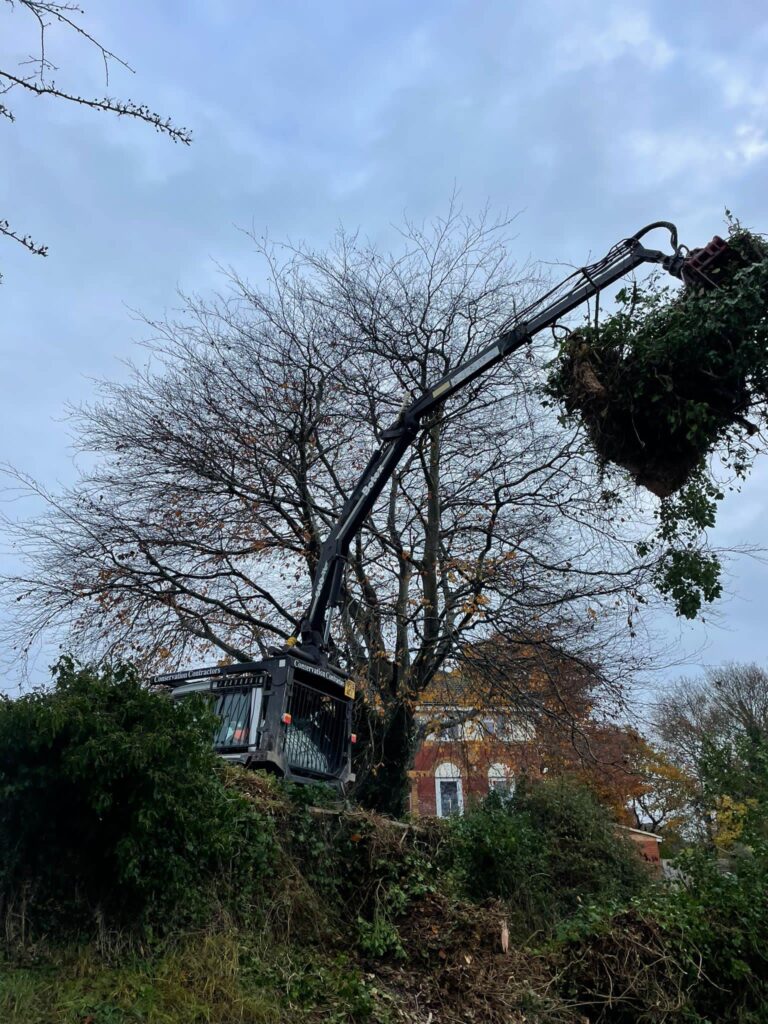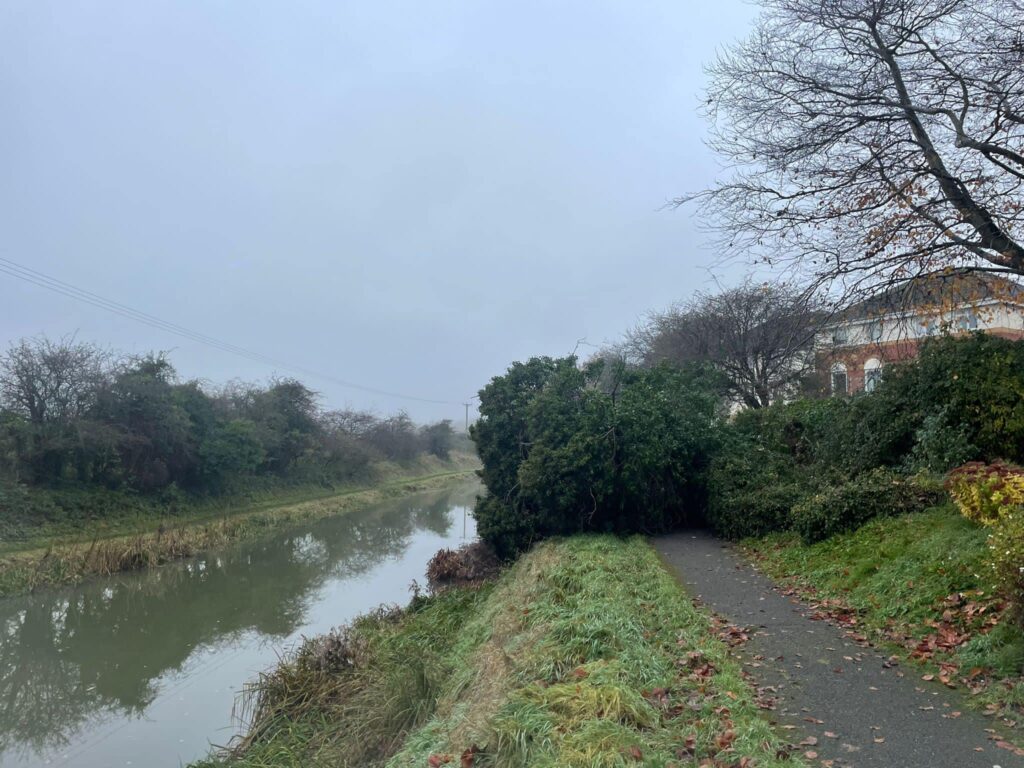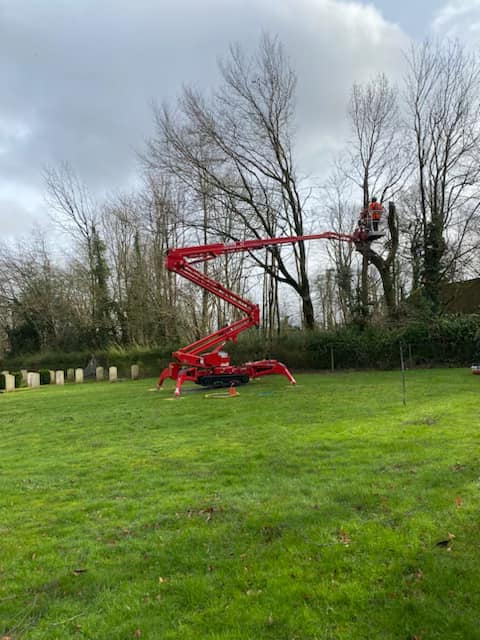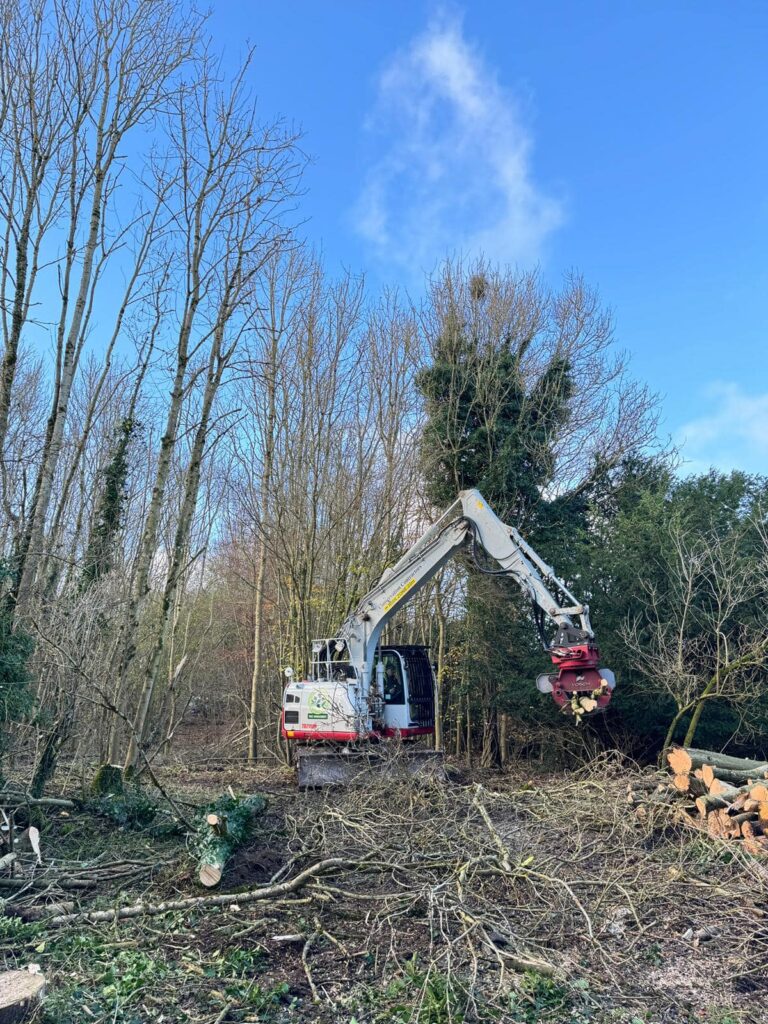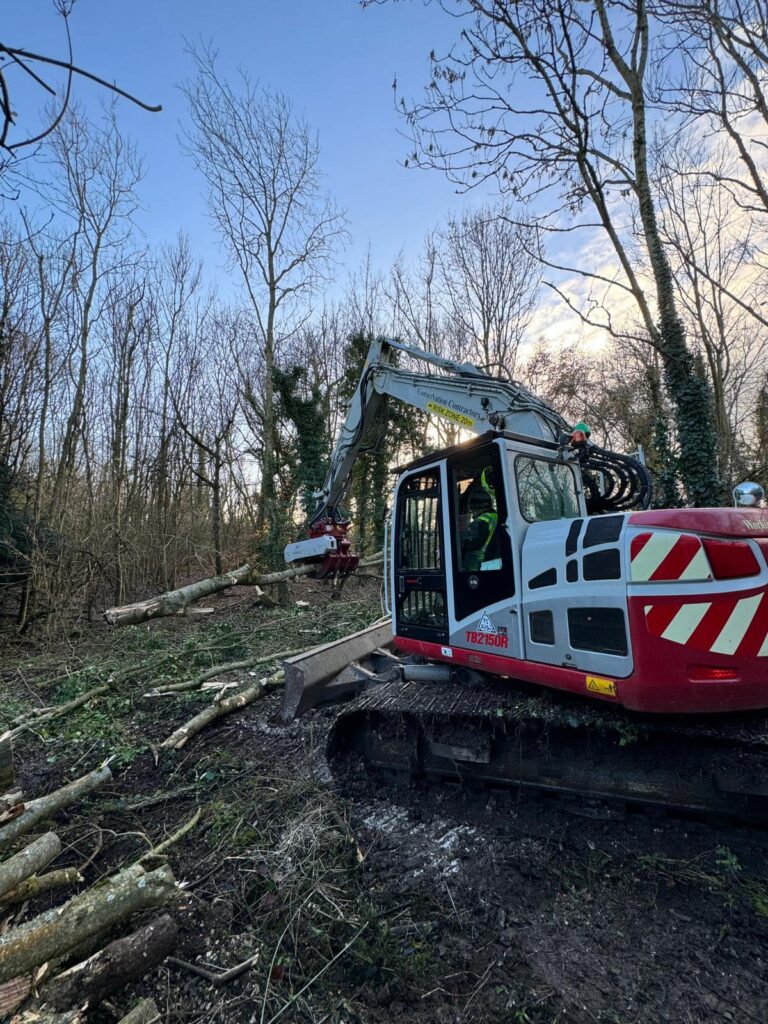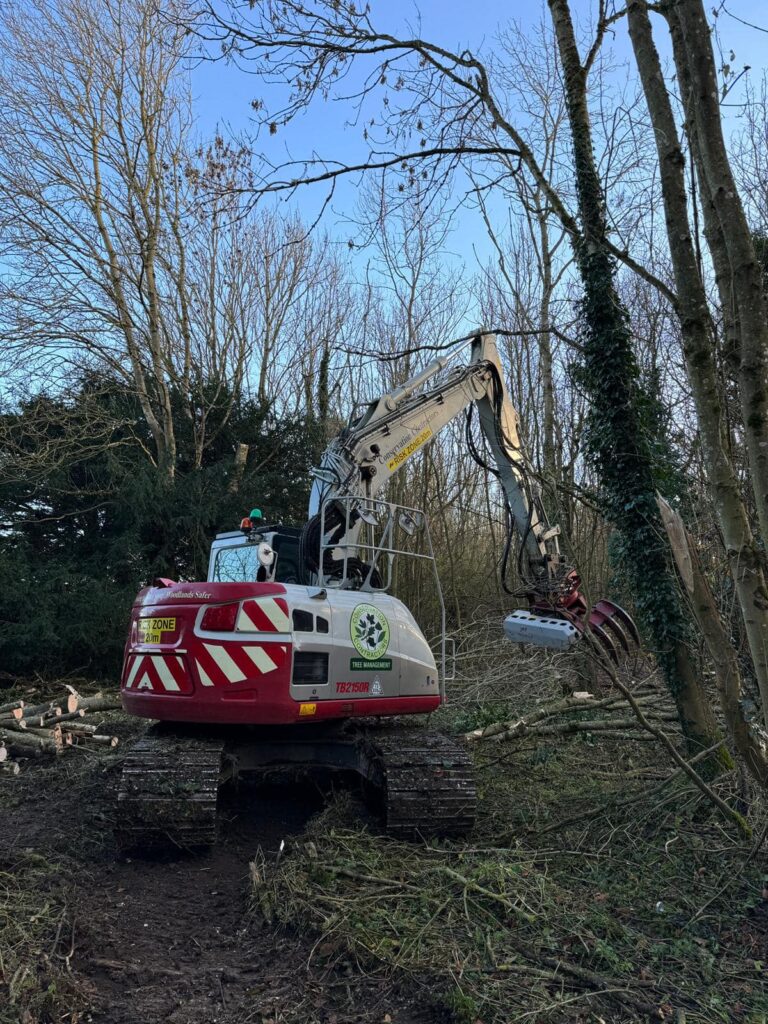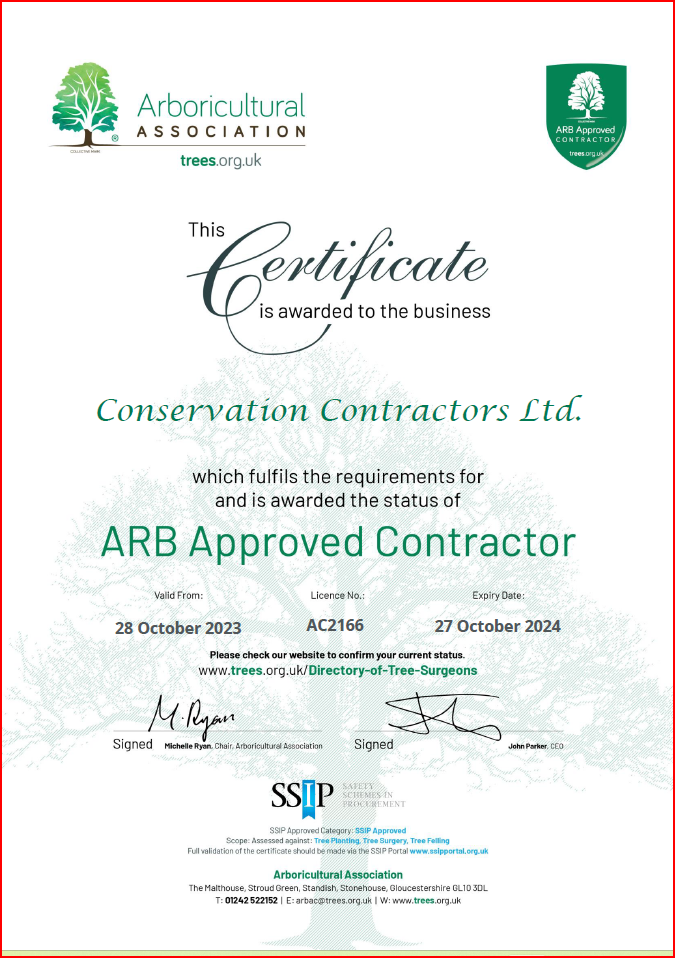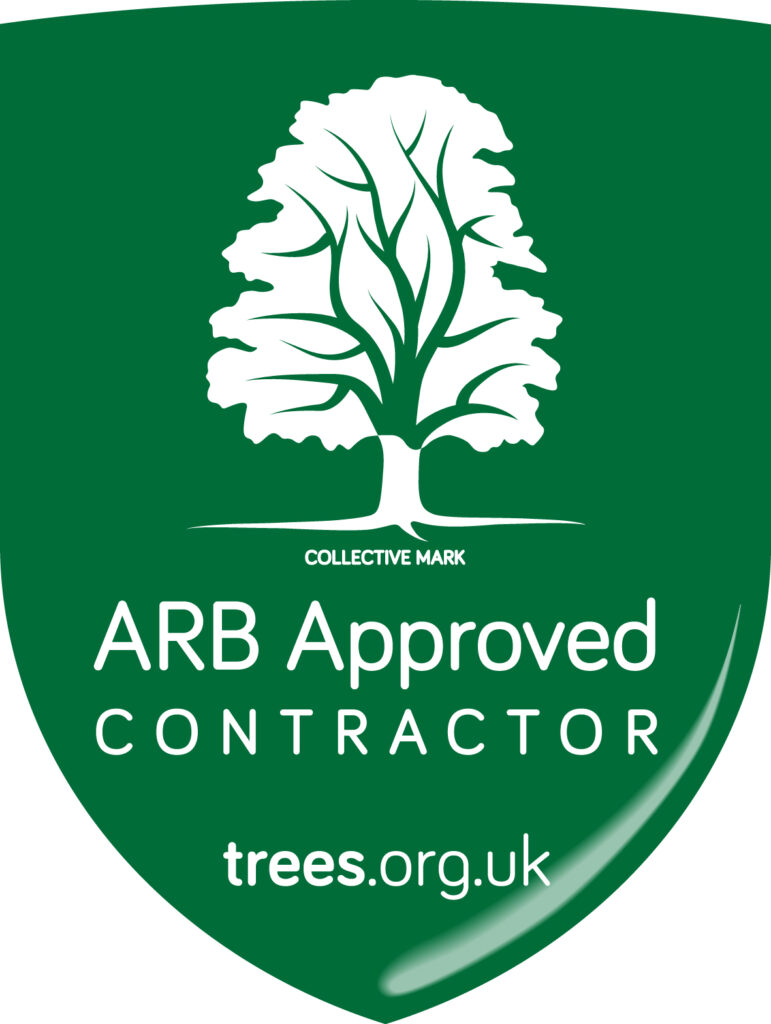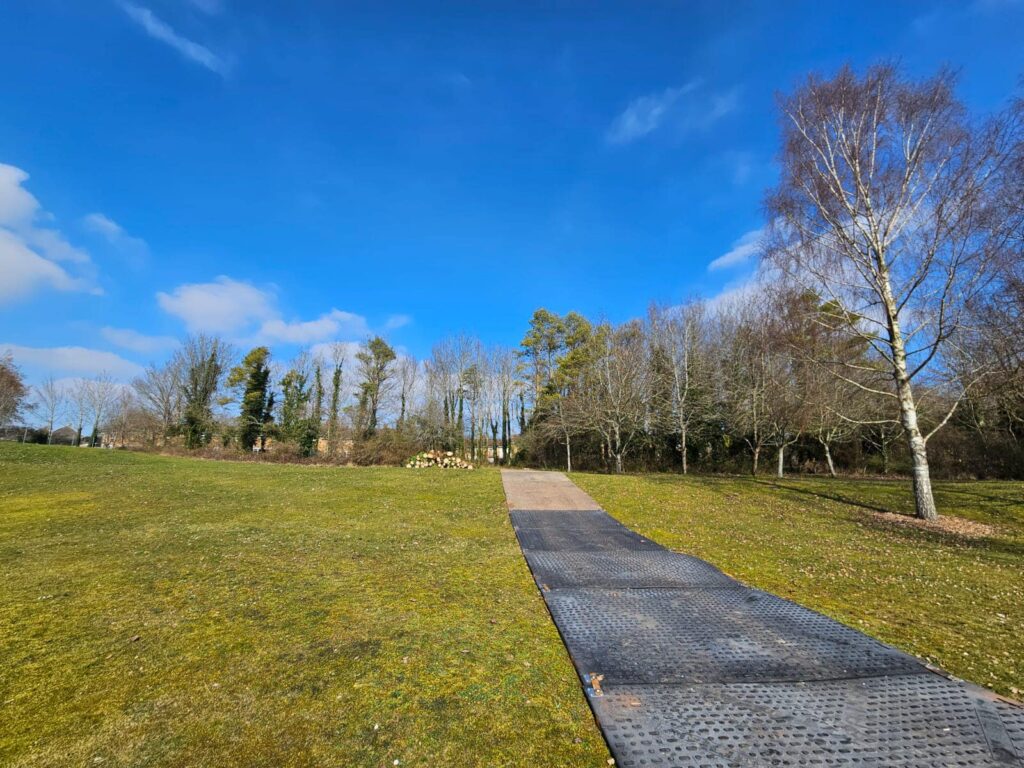Treading lightly today to carry out Ecology on a veteran tree; once the tree was given the all-clear, it was sectionally dismantled. Jan 2024
Category: Tree Surgery
The Vosch grapple saw doing what it does best dealing with a few ash trees
Works to remove large poplar trees in Aldershot.
Works to remove large poplar trees in Aldershot.
The trees were over 40′ tall (the MEWP is 30m high)!
All timber had to be extracted through a small entrance with great care.
Some of the trees were hanging over an SSSI canal, which added to the complexity.
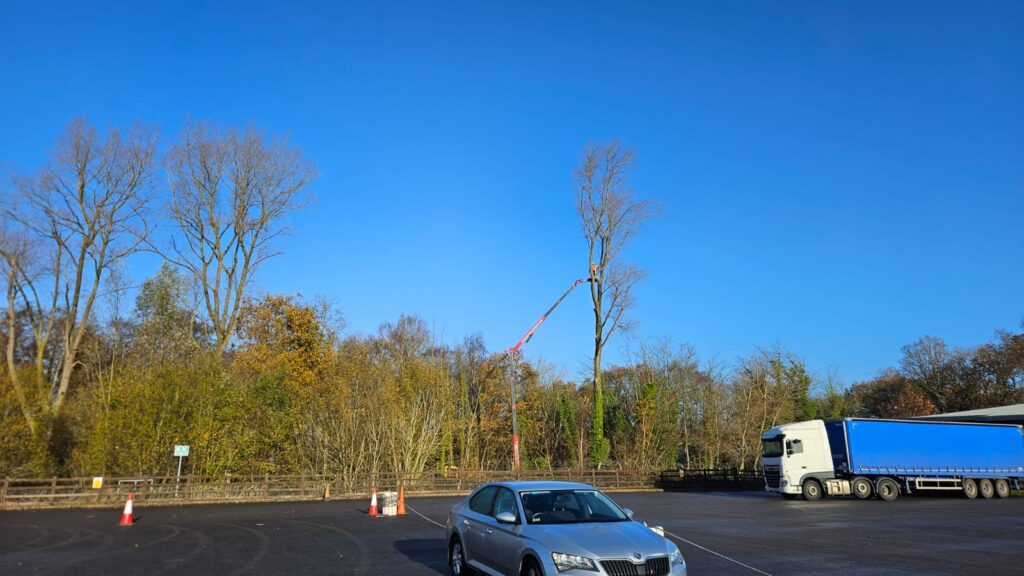

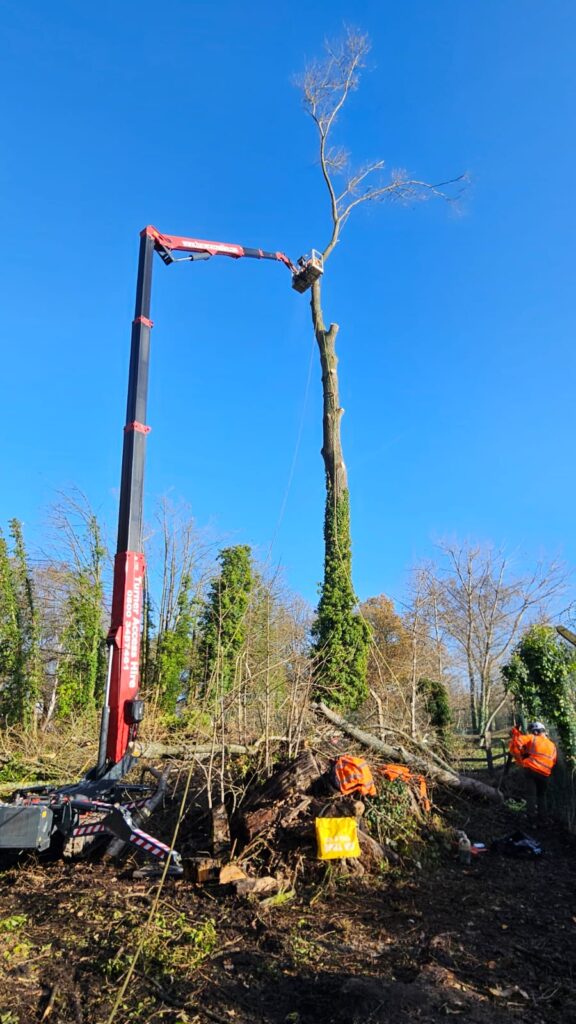
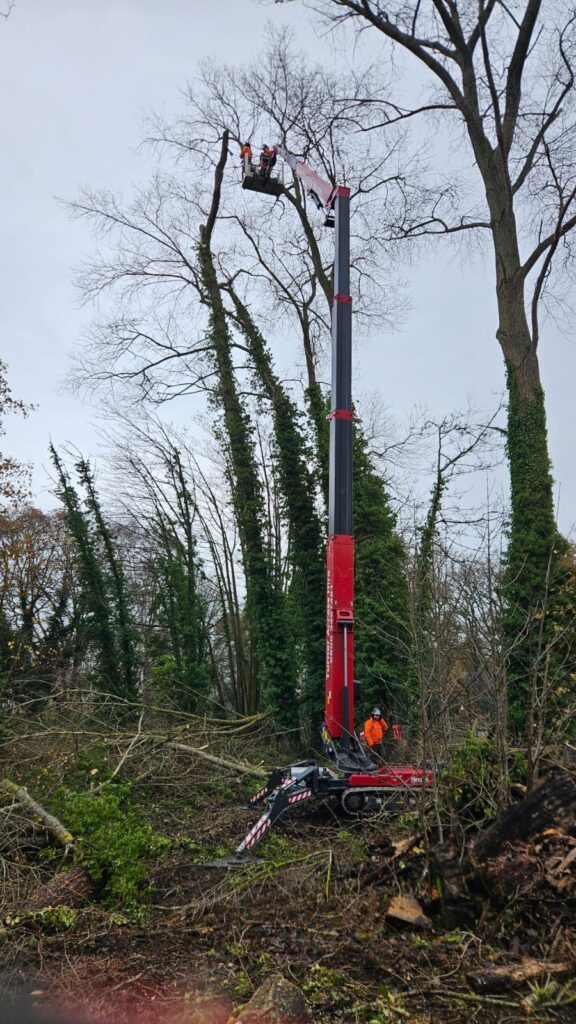
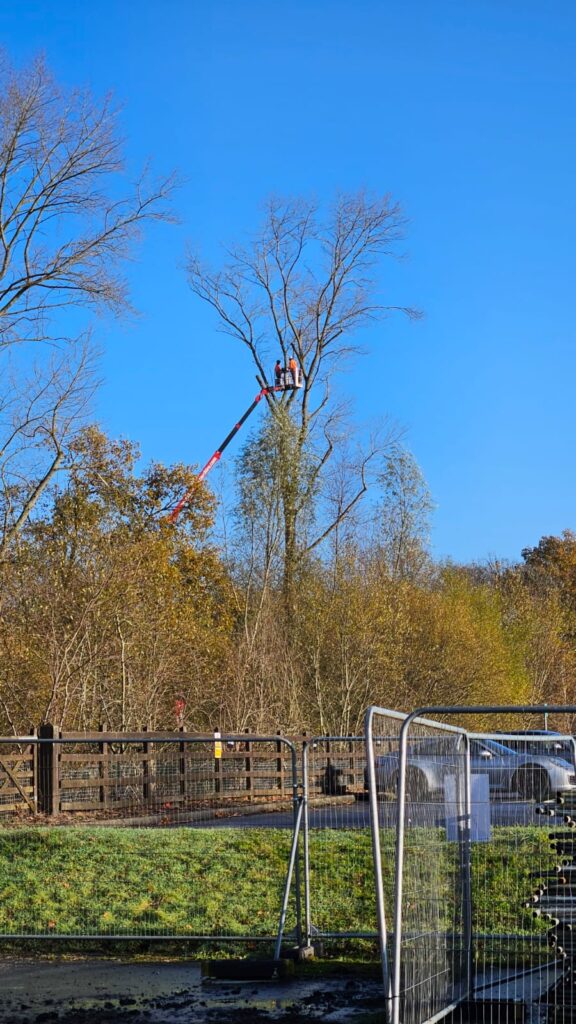
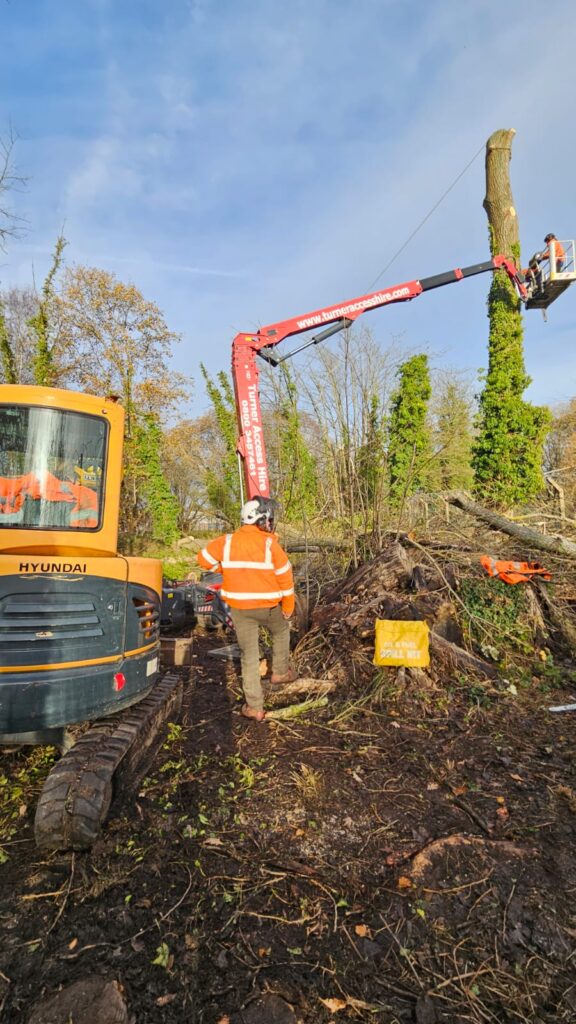
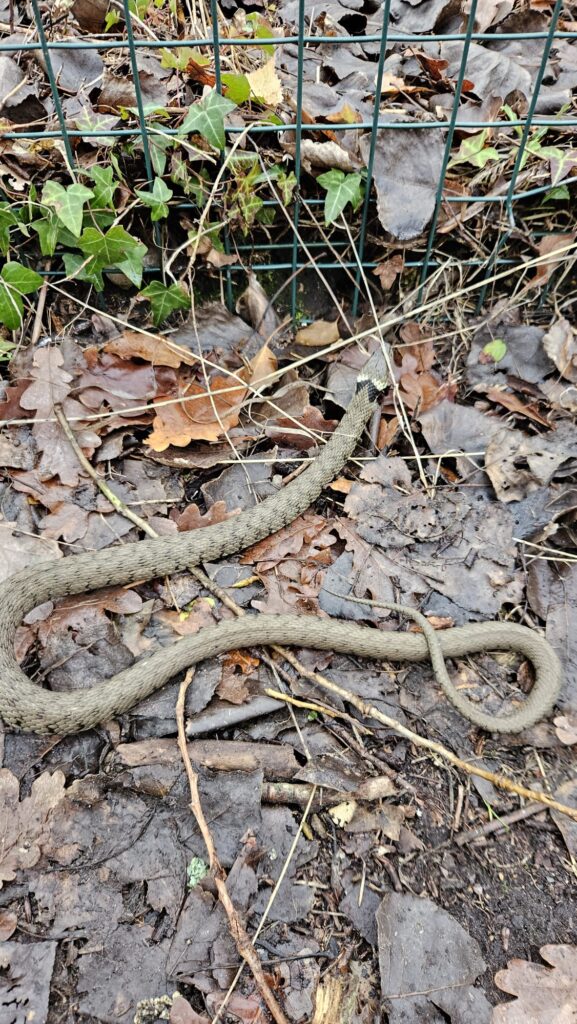
Our Arb Assessment – Ofsted for Arborists!
We thought we’d give you a flavour of what’s involved – and perhaps liken it in a way to an “Ofsted for Arborists”!
There are pages of reading if you are interested, but the essence of the inspection is as follows.
The ArbAC (Approved Contractor) Scheme sets a standard that is achievable by all good tree work contractors and is broken down into four modules as follows:
- Worksite Audit
- Work Quality Inspections and Arboricultural Knowledge
- Customer Care and Office Procedures etc.
- Health & Safety Management and Workplace Inspection etc
So typically, the inspection could follow this pattern:
Before the inspection takes place, we must submit all the paperwork, all our policies, eg H&S, Environmental, Bio Security, and all our procedures.
On the day, which starts at 8 and lasts all day, the inspection starts in the yard, observing how we store our fuel and chemicals, how we keep our equipment and machinery, examine certificates and licences for waste disposal, our vehicle records, our vehicles, and things like our fire extinguishers and first aid boxes and whether they are in date. Also, our machinery and our own internal inspection logs for items such as the chain saw maintenance and use.
We then go out on site where the work must demonstrate a lowering operation using the rigging equipment. The inspectors quiz the team on site, observe, see how the team interacts and makes best and productive use of the space and how the site is set out, cross-referencing to the risk assessment done for the site. And if, for example, we needed to set up the portable refuelling station, the inspectors see where it has been sited, ensure the spill mat is used and then put away properly, and then that the whole site is cleared up.
The next part of the assessment is to visit a job to examine work previously undertaken, to see perhaps examples of reduction/thinning, looking at before shots and examining the cuts/ the angles of cuts, the percentages of crown reduced, why reduced etc.
Then back to the yard for further examination of paperwork/procedures and processes and a debrief. We have of course to show all the training undertaken for all staff for example first aid/chain saw use and maintenance/felling small trees/climbing using rope and harness, large tree rigging, and dealing with multiple windblown sites.
See too our Accreditation page on our website for details of our ISO and other accreditations.
Eight of the world’s most amazing trees – from the Major Oak to the Lone Cypress
Eight of the world’s most amazing trees – from the Major Oak to the Lone Cypress
A good article for weekend relaxation (!) by Hannah Jane Parkinson last week on 6th in The Guardian, including a reference to Sycamore Gap.
The featured image is of the One Hundred Guinea Oak at The Vyne in Basingstoke, about which we wrote earlier in the year here.
Woodland thinning near Tidworth
The Hundred Guinea Oak at the National Trust’s The Vyne in Basingstoke
“This ancient oak tree, thought to be more than 650 years old, owes its long life to William John Chute, who opened The Vyne during the 19th Century.
It’s believed that the tree gained its name after he refused to sell it to a naval agent looking for timber at the time of the Battle of Trafalgar. When Chute refused the first offer of £100, the agent returned the following day and offered one hundred guineas*. According to diary entries written at the time, Chute said “any tree that increases in value by £5 overnight is too valuable an investment to lose”.
The hundred guinea oak has been present for many key moments in The Vyne’s history. In Tudor times, it saw royal visitors, including Hendry VIII with Catherine of Aragon, and later with Anne Boleyn. And during the Second World War, it witnessed the Estate being used to shelter evacuees.
Over its lifetime, the tree has also supported a variety of wildlife. It’s a favourite resting place for jackdaws and nuthatches. and squirrels can frequently be seen moving around the branches.
Fungal decay has slowly hollowed out the trunk which provides shelter for invertebrates and bats.
How we care for the tree: Rare and ancient trees need special care. To make sure it can withstand bad weather, we tested the tree by hooking it up to movement sensors and exerting a force that monitors its position and tells us how it fares against a non-prevailing wind.
We also treat the roots to a lovingly deep layer of oak wood chip and a solution of compost steeped in microbes. This process improves the air in the soil and makes the nutrients more easily absorbed by the tree”
(taken from the information board in front of the tree)
*A guinea was worth £1,1s (one pound and one shilling). This is the same as £1.05 in modern money, and to this day guineas are used to sell horses.
Very approximately, £100 in 1850 is equivalent in purchasing power to just over £17,000 today.
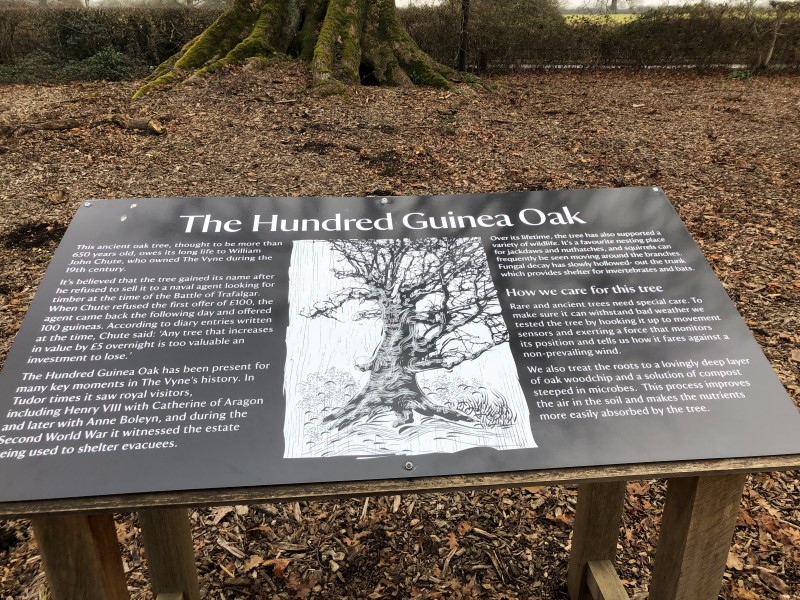
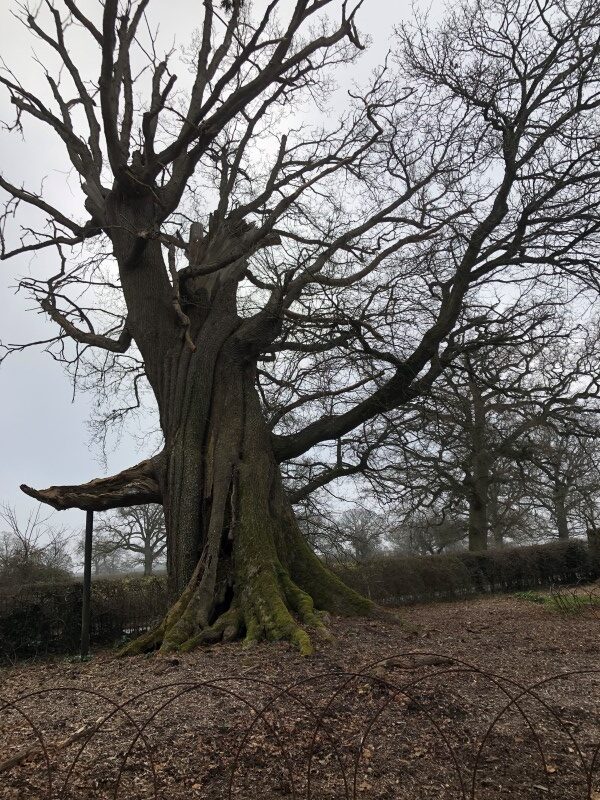
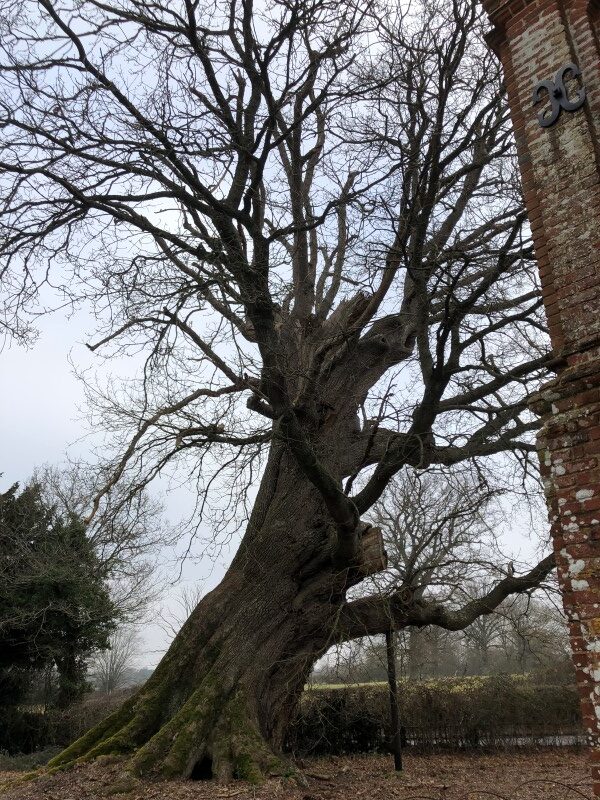
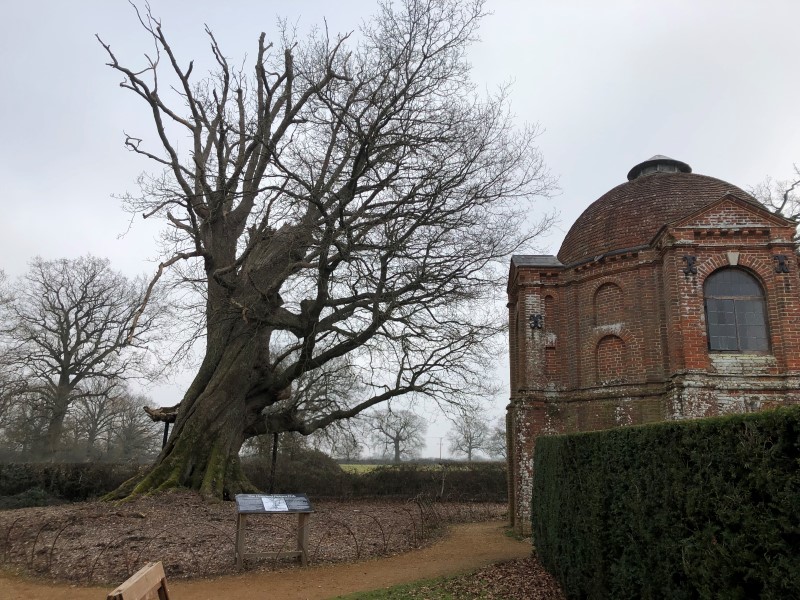
Reduction to decayed beech tree
Reduction to a decayed beech tree to try and retain for a few more years and provide habitat in the meantime; but, our 26m MEWP was not quite enough reach for the top.
Access was tight, but a great job was done by all involved over the two days.
For further information about our MEWPS, please click here
21 January 2023
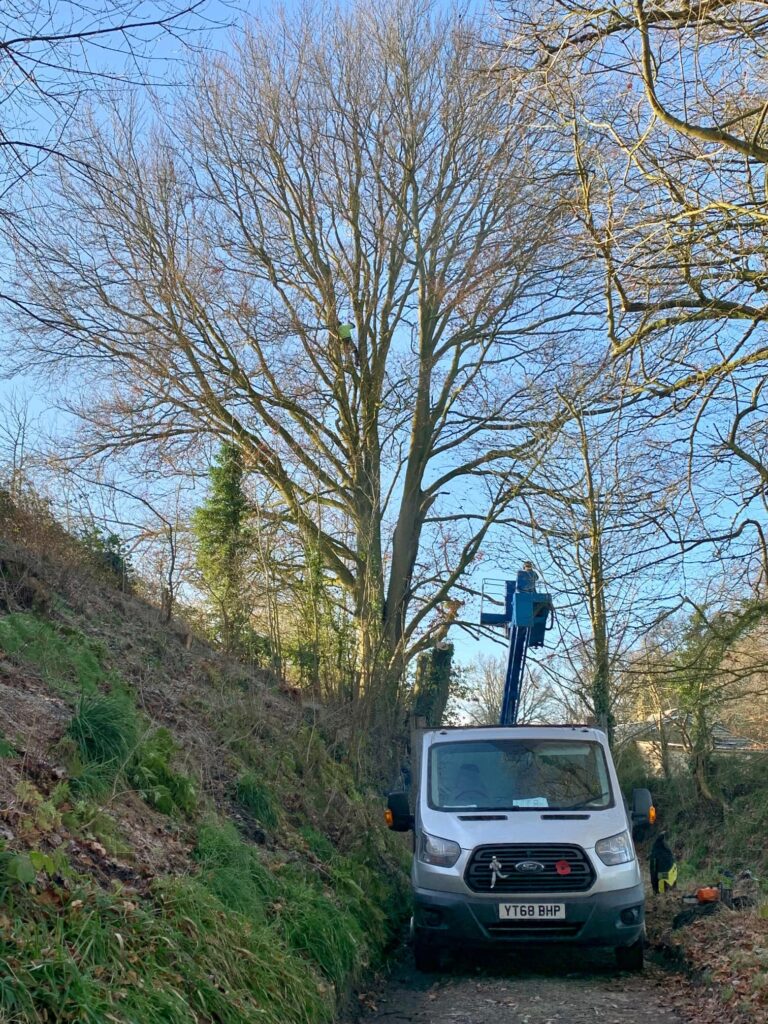
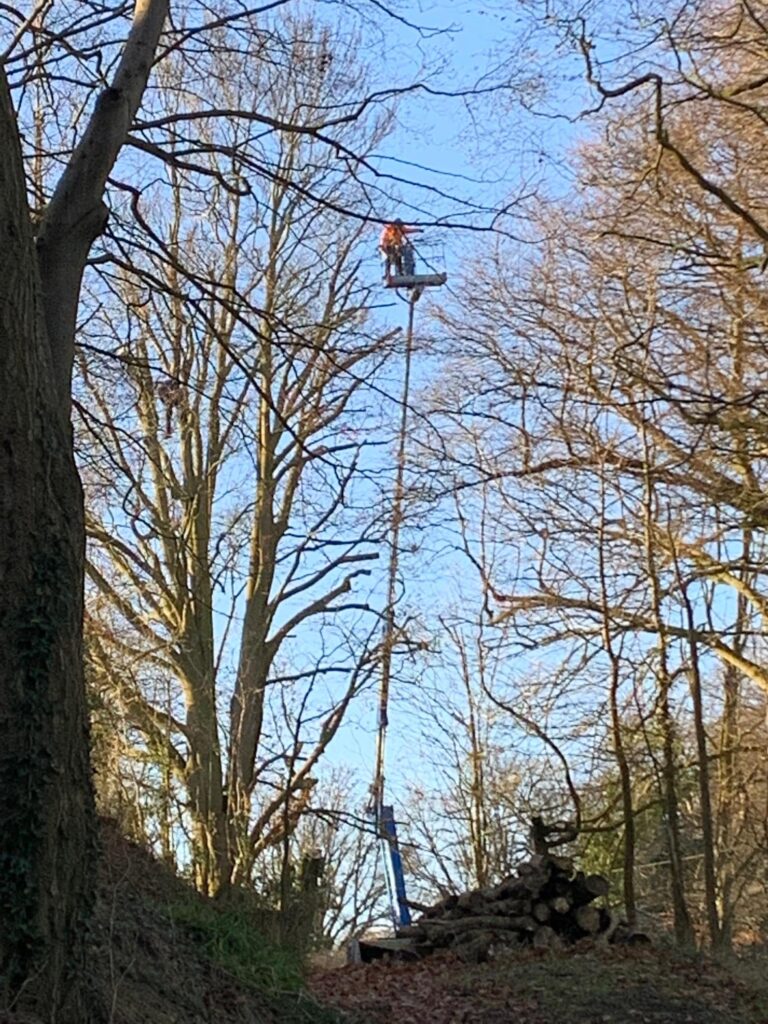
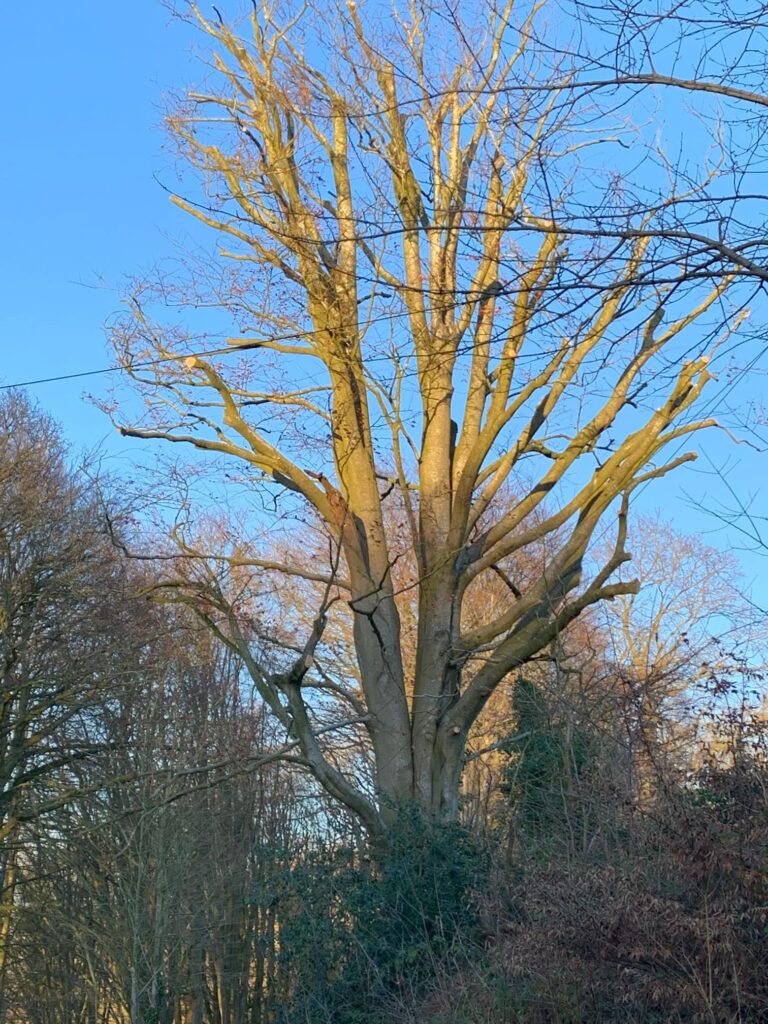
Our tracked MEWP – just the job for those hard-to-reach trees
You can’t beat our tracked MEWP for those hard-to-reach trees in hard-to-reach positions.
We removed a failing ash tree from over a garage and a river in the pouring rain. And, the local EA testing station was 20 metres downstream!
Well done to all
For further information about our MEWPS, please click here
13 January 2023
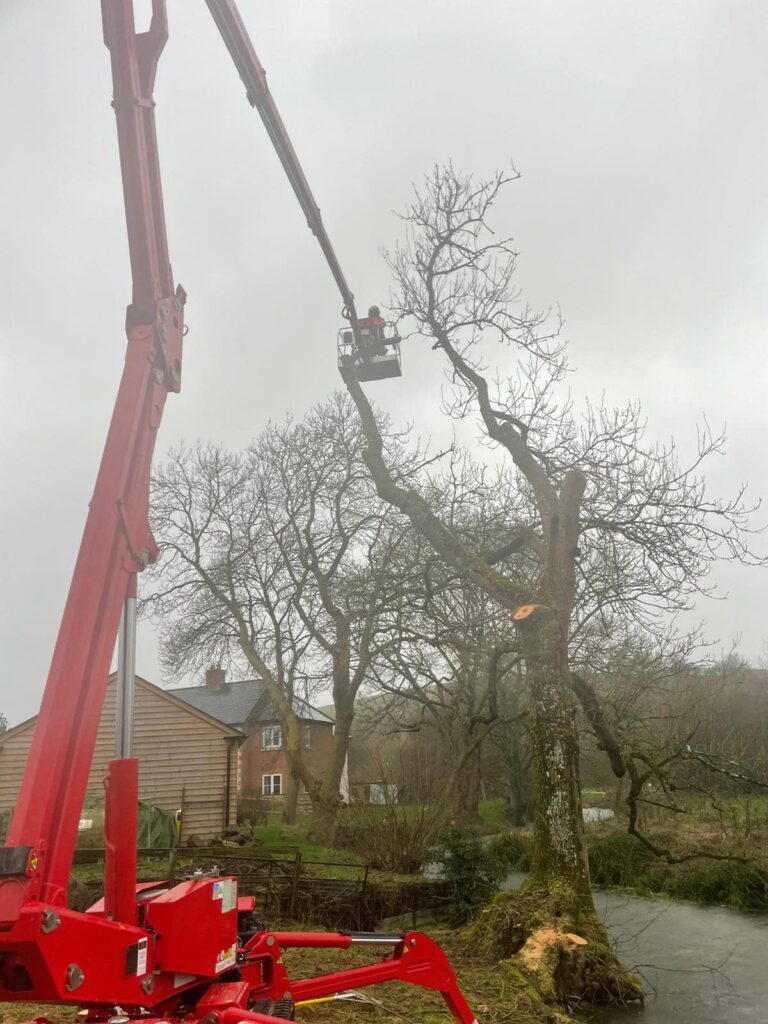
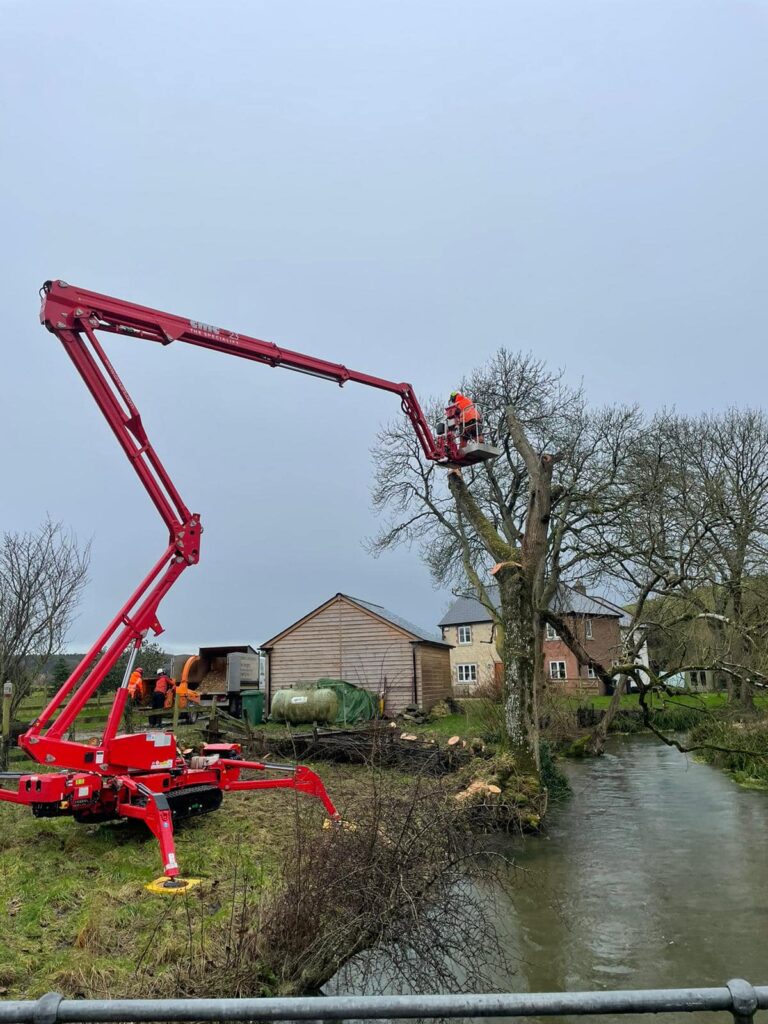
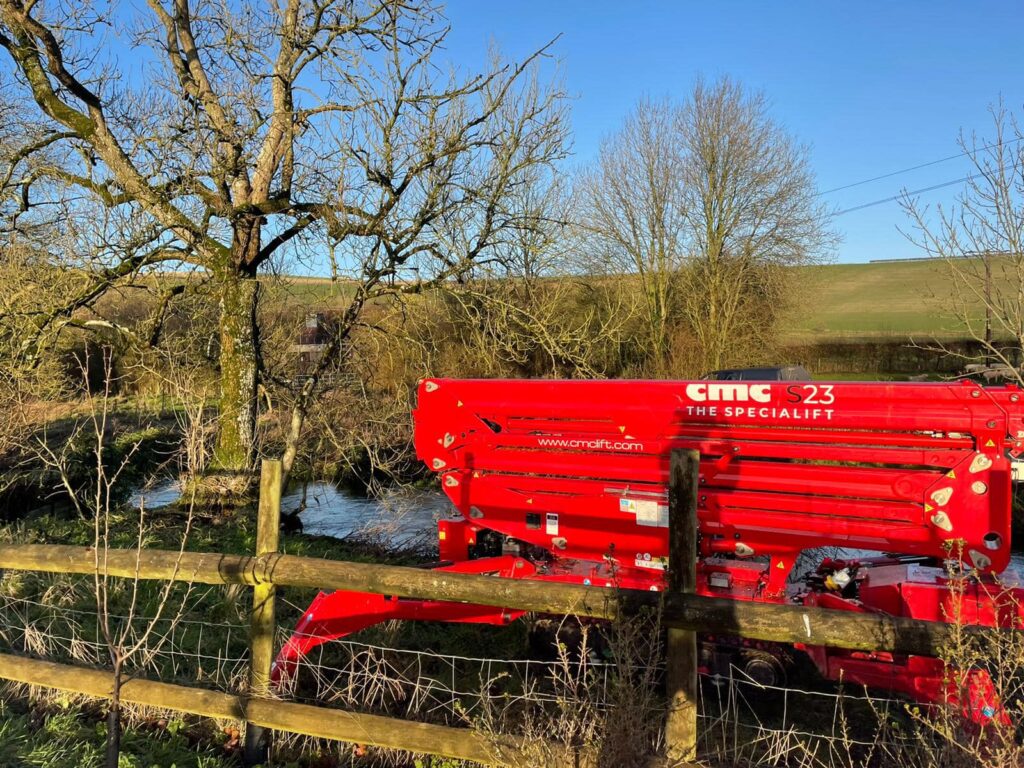
Removal of a fallen tree across the tow path at Devizes
Removal of a fallen tree across the towpath at Devizes is all made easy with Sam on the crane!
